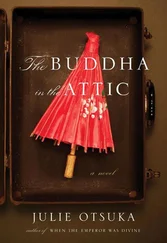“Attention,” he bellowed.
The students fell silent and came to attention, their backs straightening as if they had been pulled by invisible strings. Quietly, a tall young man in a frayed work shirt slid onto the bench beside Andras and bent his head toward Andras’s ear.
“That’s Auguste Perret,” the young man said in Hungarian. “He was my teacher, and now he’ll be yours.”
Andras looked at the young man in surprise and relief. “You’re the one who wrote the note in my packet,” he said.
“Listen,” the man said, “and I’ll translate.”
Andras listened. At the lectern, Auguste Perret lifted the jagged rock in both hands and asked a question. The question, according to Andras’s translator, was whether anyone knew what this building material was. You there, in front? Concrete, that was correct. Reinforced concrete. By the time they finished their five years at the school, all of them would know everything there was to know about reinforced concrete. Why? Because it was the future of the modern city. It would make buildings that surpassed in height and strength anything that had been built before. Height and strength, yes; and beauty. Here at the École Spéciale we were not seduced by beauty, however; leave that to the sons of privilege at that other school. That school was a gentlemen’s institution, a place where boys went to play at the art of dessinage; we at the École Spéciale were interested in real architecture, buildings that people could inhabit. If our designs were beautiful, so much the better; but let them be beautiful in a manner that belonged to the common man. We were here because we believed in architecture as a democratic art; because we believed that form and function were of equal importance; because we, the avantgarde, had shrugged off the bonds of aristocratic tradition and had begun to think for ourselves. Let anyone who wanted to build Versailles stand now and go through that gate. That other school was only three Métro stops away.
The professor paused, his arm flung toward the gate, his eyes fixed on the rows of students. “Non?” he shouted. “Pas un?”
No one moved. The professor stood statuelike before them. Andras had the sense of being a figure in a painting, paralyzed for all eternity by Perret’s challenge. People would admire the painting in museums centuries from now. Still he would be sitting on the bench, inclined slightly toward this man with the cape and the white beard, this general among architects.
“He gives this speech every year,” the Hungarian man next to Andras whispered. “Next he’ll talk about your responsibility to the students who will come after you.”
“Les étudiants qui viennent après vous,” the professor went on, and the Hungarian translated. Those students were relying upon you to study assiduously. If you did not, they, too, would fail. You would be taught by those who came before you; at the École Spéciale you would learn collaboration, because your life as an architect would involve close work with others. You might have your own vision, but without the help of your colleagues that vision wasn’t worth the paper it was drawn upon. In this school, Emile Trélat had instructed Robert Mallet-Stevens, Mallet-Stevens had instructed Fernand Fenzy, Fernand Fenzy had instructed Pierre Vago, and Pierre Vago would instruct you.
At that, the professor pointed into the audience, and the young man beside Andras stood up and made a polite bow. He strode to the front of the assembly, took his place beside Professor Perret at the lectern, and began addressing the students in French. Pierre Vago. This man who had been translating for Andras-this rumpled-looking young man in an inkstained work shirt-was the P. VAGO of Andras’s class schedule. His studio leader. His professor. A Hungarian. Andras felt suddenly faint. For the first time it seemed to him he might have a chance of surviving at the École Spéciale. He could hardly concentrate on what Pierre Vago was saying now, in his elegant, slightly accented French. Pierre Vago had indeed been the one who’d written the Hungarian note in Andras’s manila envelope. Pierre Vago, it occurred to Andras, was probably the one man responsible for his being there at all.
“Hey,” Rosen said, pulling Andras’s sleeve. “Regardes-toi.”
In the excitement, Andras’s nose had begun to bleed. Red spots glistened on his white shirt. Polaner looked at him with concern and offered a handkerchief; Ben Yakov went pale and turned away. Andras took the handkerchief and pressed it against his nose. Rosen made him tip his head back. A few people turned to see what was going on. Andras sat bleeding into the handkerchief, not caring who was looking, happier than he’d ever been in his life.
Later that day, after the assembly, after Andras’s nosebleed had stopped and he’d traded his own clean handkerchief for the one he’d bled upon, after the first meeting of the studio groups, and after he’d exchanged addresses with Rosen, Polaner, and Ben Yakov, Andras found himself in Vago’s cluttered office, sitting on a wooden stool beside the drafting table. On the walls were sketched and printed plans, black-and-white watercolors of beautiful and impossible buildings, a scale drawing of a city from high above. In one corner was a heap of paint-stained clothes; a rusted, twisted bicycle frame leaned against the wall. Vago’s bookshelves held ancient books and glossy magazines and a teakettle and a small wooden airplane and a skinny-legged junk sculpture of a girl. Vago himself leaned back in his swivel chair, his fingers laced behind his head.
“So,” he said to Andras. “Here you are, fresh from Budapest. I’m glad you came. I didn’t know if you’d be able to make it on such short notice. But I had to try. It’s barbarous, those prejudices about who can study what, and when, and how. It’s not a country for men like us.”
“But-forgive me-are you Jewish, Professor?”
“No. I’m a Catholic. Educated in Rome.” He gave his R a deep Italianate roll.
“Then why do you care, sir?”
“Shouldn’t I care?”
“Many don’t.”
Vago shrugged. “Some do.” He opened a folder on his desk. There, in full color, were reproductions of Andras’s covers for Past and Future: linoleum prints of a scribe inking a scroll, a father and his boys at synagogue, a woman lighting two slender candles. Andras saw the work now as if for the first time. The subjects seemed sentimental, the compositions obvious and childish. He couldn’t believe this was what had earned his admission to the school. He hadn’t had a chance to submit the portfolio he’d used for his applications to Hungarian architectural colleges-detailed drawings of the Parliament and the Palace, measured renderings of the interiors of churches and libraries, work he’d slaved over for hours at his desk at Past and Future. But he suspected that even those pieces would have seemed clumsy and amateurish in comparison to Vago’s work, the crisp plans and gorgeous elevations pinned to the walls.
“I’m here to learn, sir,” Andras said. “I made those prints a long time ago.”
“This is excellent work,” Vago said. “There’s a precision, an accuracy of perspective, rare in an untrained artist. You’ve got great natural skill, that’s apparent. The compositions are asymmetrical but well balanced. The themes are ancient but the lines are modern. Good qualities to bring to your work in architecture.”
Andras reached for one of the covers, the one that showed a man and boys at prayer. He’d carved the linoleum original by candlelight in the apartment on Hársfa utca. Though he hadn’t considered it at the time-and why not, when it was so clear now?-this man in the tallis was his father, the boys his brothers.
“It’s fine work,” Vago said. “I wasn’t the only one who thought so.”
Читать дальше












